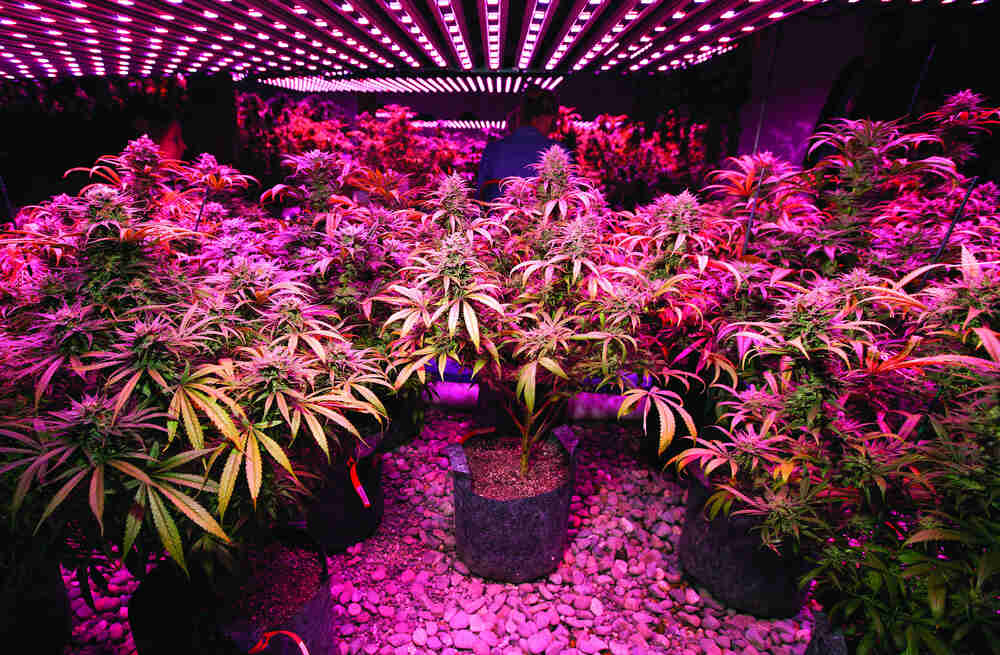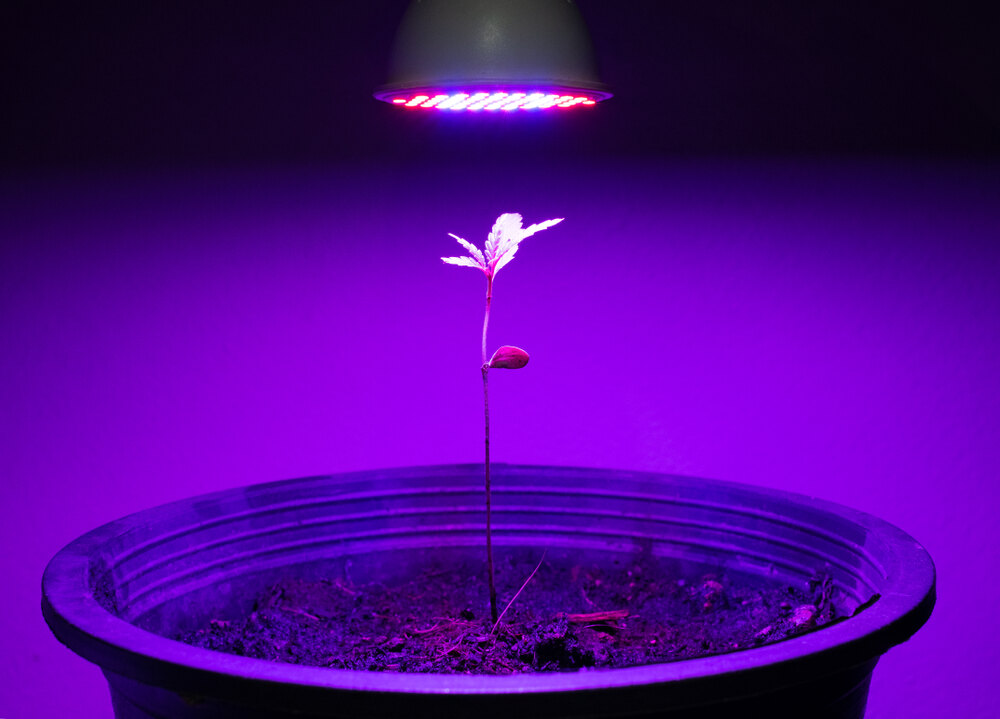
What is a Good PPFD for Autoflowers?
When it comes to growing autoflowers, lighting is super important, and knowing what PPFD is can make or break your grow. PPFD stands for Photosynthetic Photon Flux Density, and it’s essentially the amount of light your plants are getting at a specific point in your grow space over a fixed period of time. But what’s the ideal range for autoflowers? Let’s break it down in a way that’s easy to understand, so you can maximize your yield without overcomplicating things.
Understanding PPFD and Its Importance for Autoflowers
What is PPFD (Photosynthetic Photon Flux Density)?
PPFD measures how much light hits a fixed amount area of your grow space, normally per second. More specifically the number of photons that your plants can use for photosynthesis. Imagine it as the amount of food your plants are getting—too little, and they’re hungry; too much, and they get overwhelmed. Autoflowers are just like us—they thrive with just the right amount of light.
Why is PPFD important for cannabis growth?
PPFD directly impacts how well your plants grow. It’s a measurement that helps you understand the amount of light they can convert light into energy, which is what they use to build those big, beautiful buds. Without enough light, your plants will stretch out and get tall and spindly. Too much light, though, and you’re gonna get light burn, stunted growth, or stressed plants. That’s why knowing the right PPFD is key to getting the most out of your grow.
How does PPFD affect autoflowers differently from photoperiod strains?
Autoflowers are a bit more laid-back when it comes to light schedules, but they’re still picky about how much light they receive. Unlike photoperiod plants that rely on the length of the day to flower, autoflowers just need the right amount of light intensity from start to finish. That means paying close attention to PPFD from the moment they sprout, all the way through flowering.
Optimal PPFD Levels for Different Stages of Autoflower Growth

PPFD for seedling stage
When your autoflowers are seedlings, they don’t need much light at all. I usually aim for a PPFD of 200-300 μmol/m²/s. At this stage, they’re just babies—they don’t need a ton of energy yet, but they still need enough light to kickstart healthy growth. Keeping the lights a little higher can help spread the light evenly without overwhelming them.
PPFD for vegetative stage
As your autoflowers move into the vegetative stage, you can crank up the PPFD a bit. I’d recommend aiming for 400-600 μmol/m²/s. They’re growing fast now, so you want to give them enough light to fuel that growth without blasting them too hard. This is the phase where strong roots and sturdy stems are built.
PPFD for flowering stage
Once your autoflowers start flowering, this is when they need the most light. A good PPFD range here is 600-900 μmol/m²/s. Any higher, and you could risk light burn, especially if your grow space isn’t dialed in perfectly. But this is also where they’ll be using the most energy to produce buds, so giving them all the light they can handle (within that range) is key.
Adjusting PPFD based on environmental factors (e.g., light type, distance, and grow space)
PPFD isn’t just about the lights you use—it’s also about how far away the lights are and how well your space is set up. If you’re using LED lights, they can be closer to the plants, while HPS lights need to be a bit further away due to heat. Keep adjusting your lights’ height to keep your PPFD within the right range for each growth stage. I always keep a light meter handy to check.
How to Measure and Adjust PPFD for Autoflowers
Tools to measure PPFD in a grow tent
To measure PPFD accurately, you’ll need a PAR meter. This tool reveals how much light your plants receive across different areas of your grow tent—a game-changer if you’re serious about maximizing your setup. Knowing the right PPFD levels can help you better plan your space, especially if you’re wondering how many autoflowers can comfortably fit in a tent. There are also apps that simulate PAR meters, though they might not be as precise.
How to adjust PPFD using grow lights
Adjusting your PPFD is as simple as raising or lowering your lights. If your PPFD is too high, raise the lights to reduce the intensity. Too low? Lower them. Some lights come with dimming options, which makes it even easier to dial in the perfect amount of light. One key point to know is that the PPFD will vary at different places on your plant. The penetration of light through your plant will increase PPFD at lower levels rather than concentrating it all in the crown of the plant.
Balancing PPFD with other light factors like DLI (Daily Light Integral)
PPFD works hand-in-hand with DLI (Daily Light Integral), which is the total amount of light your plants receive over a day. Even if your PPFD is perfect, the total light over a 24-hour period matters just as much. For autoflowers, since they don’t require a regulated light cycles like photoperiod plants, you can keep the lights on longer to balance out the light they’re getting. Bare in mind though they will need some darkness built into their schedule, we recommend a maximum of 20/4 light/dark for autoflowering strains.
Common PPFD Mistakes and How to Avoid Them
Signs your PPFD is too high
When your PPFD is too high, your plants will start showing signs of stress. You might see leaves curling, bleaching, or turning crispy. If you notice this happening, raise your lights or reduce the intensity to give your plants a break.
Signs your PPFD is too low
On the flip side, if your PPFD is too low, your plants will stretch out, searching for light. They’ll look tall and thin, with large gaps between the nodes. You’ll want to lower the lights or increase their brightness to fix this.
How to correct PPFD levels for optimal growth
Correcting PPFD is all about keeping an eye on your plants. If they look stressed or aren’t growing as expected, double-check your PPFD levels. Adjust your lights’ distance and intensity until you hit that sweet spot for each stage of growth.
What is the ideal PPFD for autoflowers in a grow tent?
Aim for 200-300 μmol/m²/s for seedlings, 400-600 μmol/m²/s for veg, and 600-900 μmol/m²/s for flowering.
Can too much PPFD harm autoflowers?
Yes, too much PPFD can cause light burn, stunted growth, and stress, especially during flowering.
How does PPFD differ from lumens or PAR?
PPFD measures usable light for photosynthesis, while lumens measure brightness for human eyes.
What happens if PPFD is too low during the flowering stage?
Low PPFD during flowering leads to weak bud development and lower yields.
How does light distance impact PPFD in autoflowers?
The closer the light, the higher the PPFD. Lower lights to increase PPFD, and raise them to reduce it.
Getting your PPFD right for autoflowers might seem tricky at first, but once you dial it in, your plants will thrive. By adjusting your lights based on the plant’s stage and regularly checking your levels with a PAR meter, you’ll give your autoflowers the best possible chance to produce solid, healthy yields. Growing weed doesn’t have to be complicated—just keep an eye on your plants and make adjustments as needed. Happy growing!
